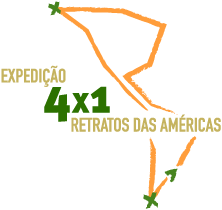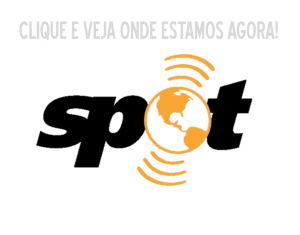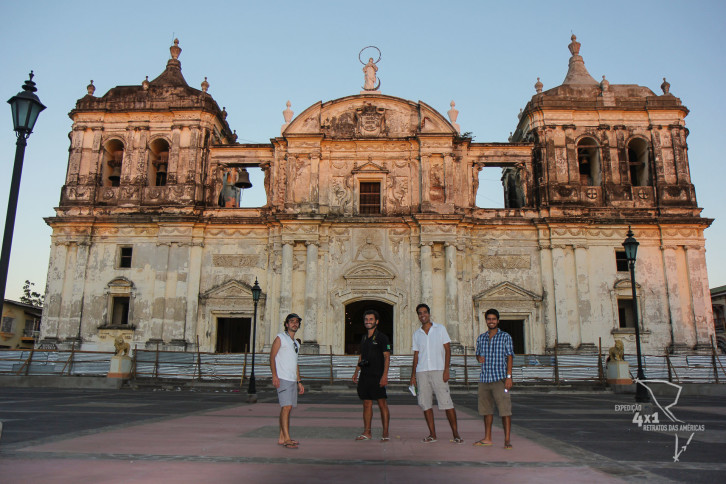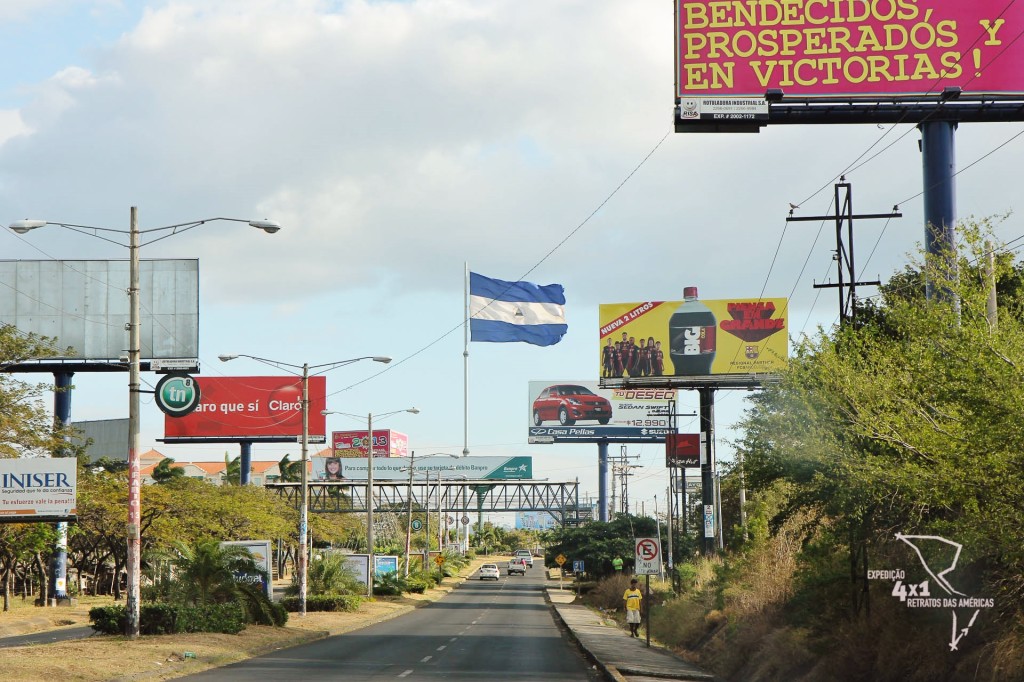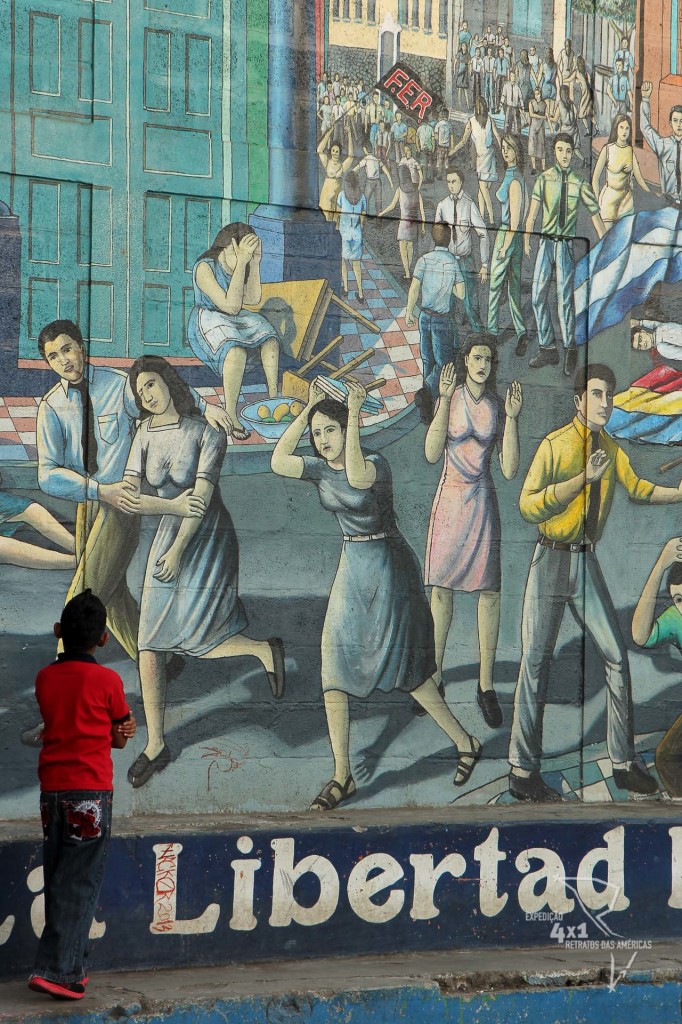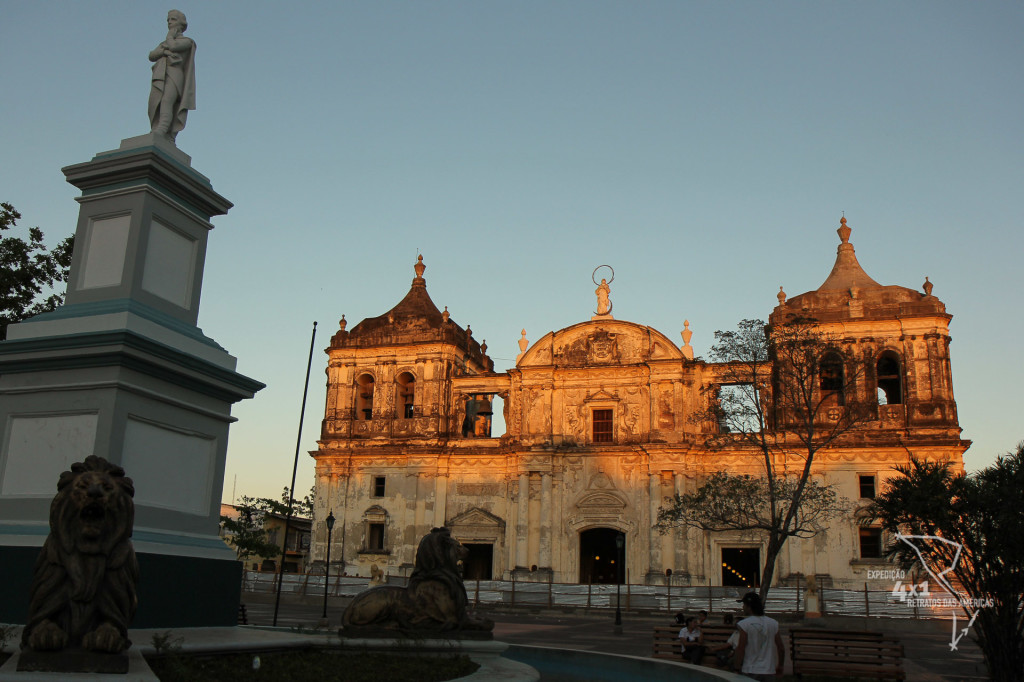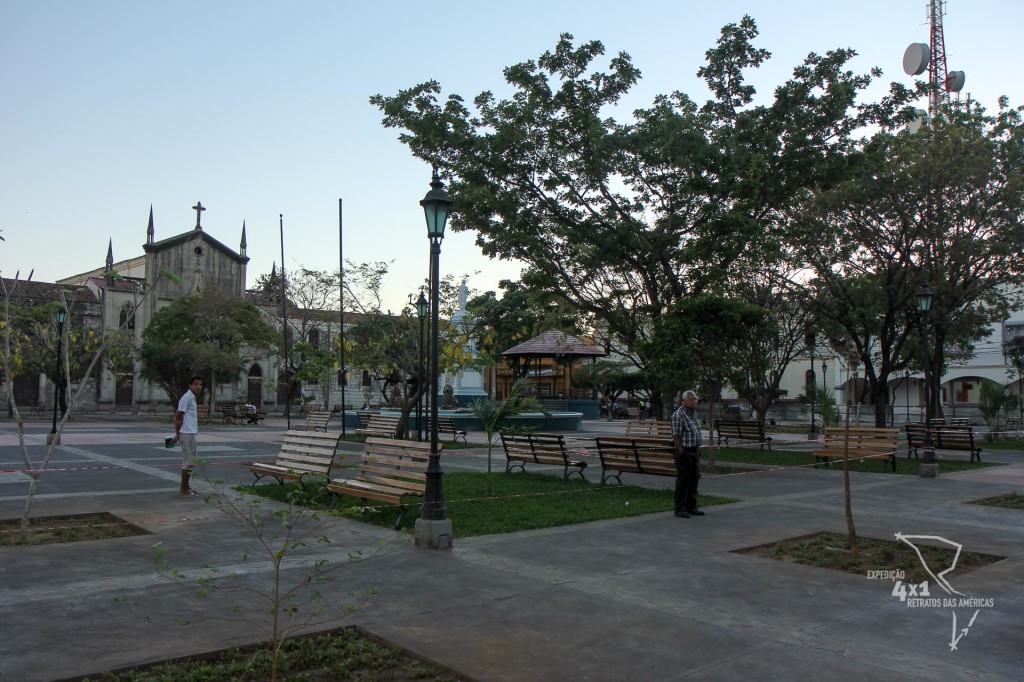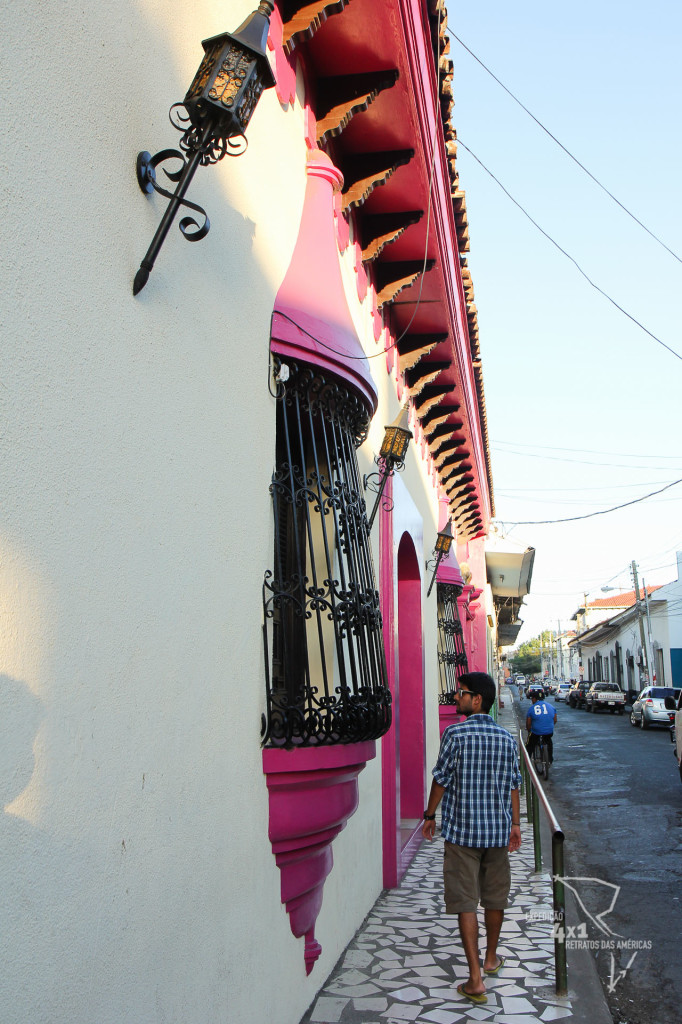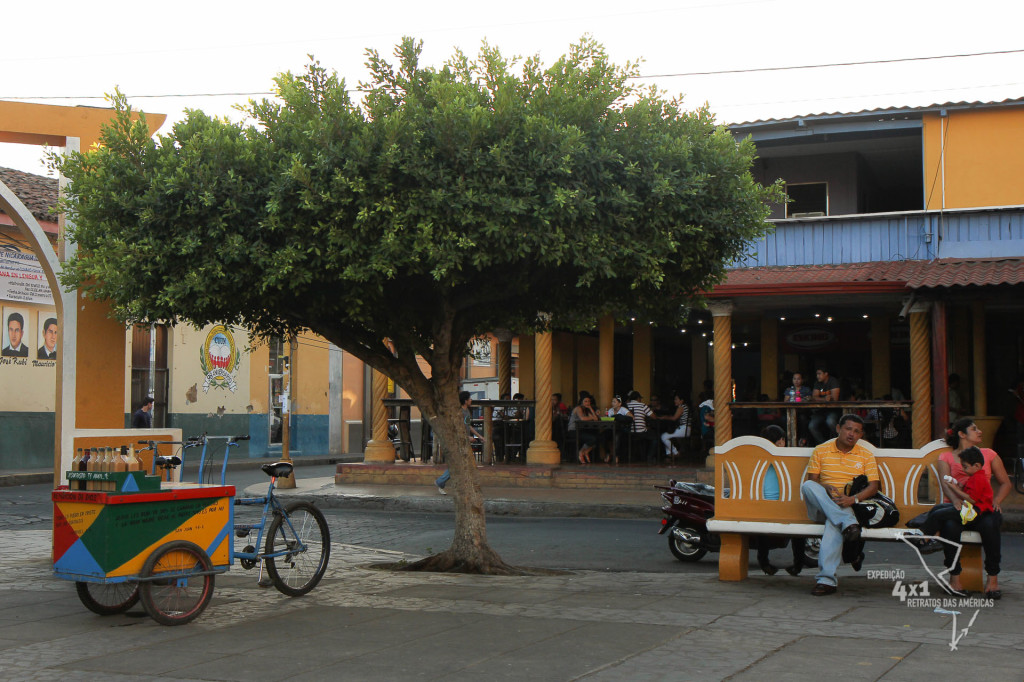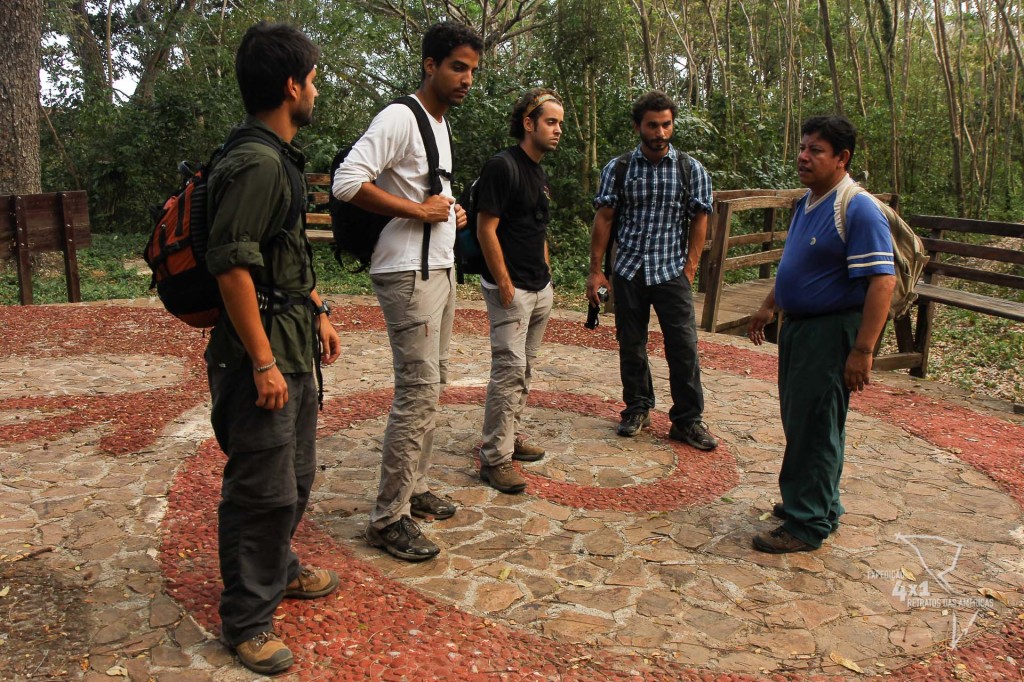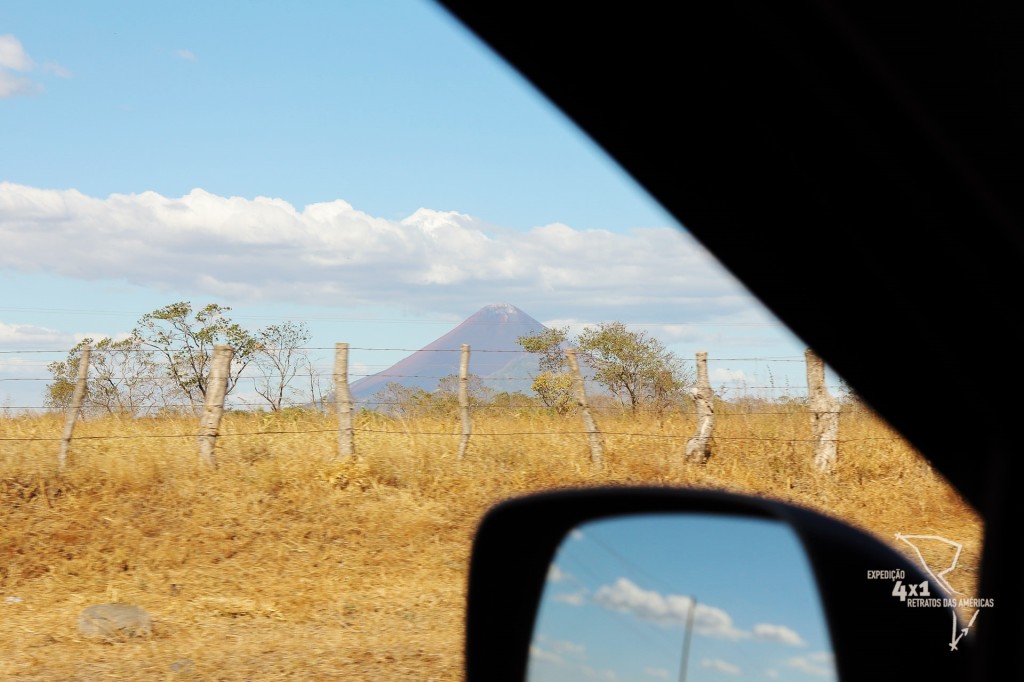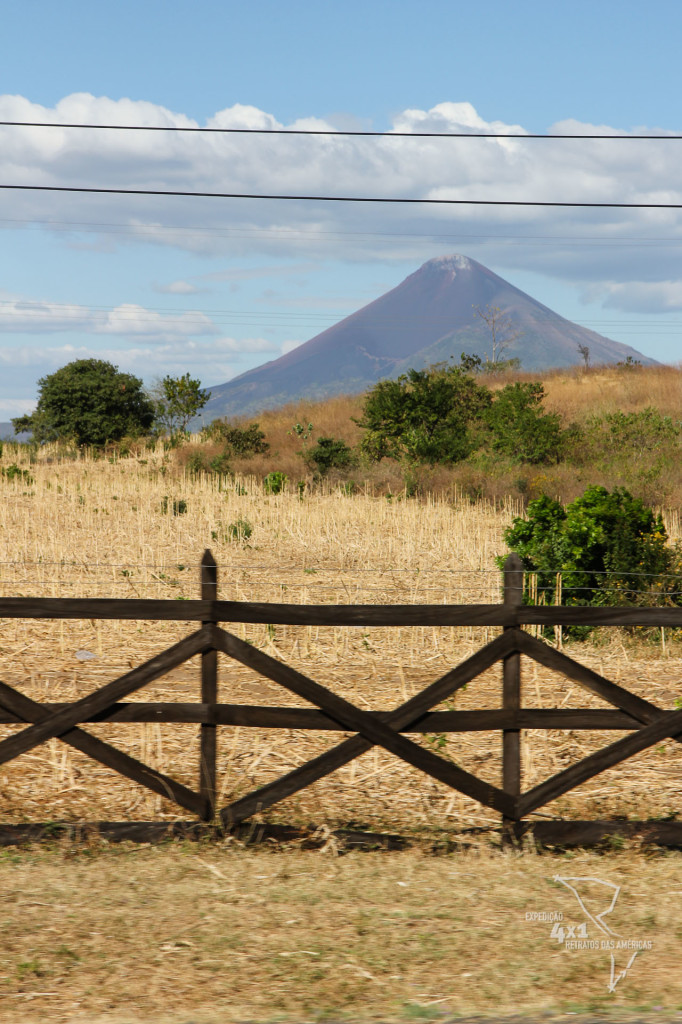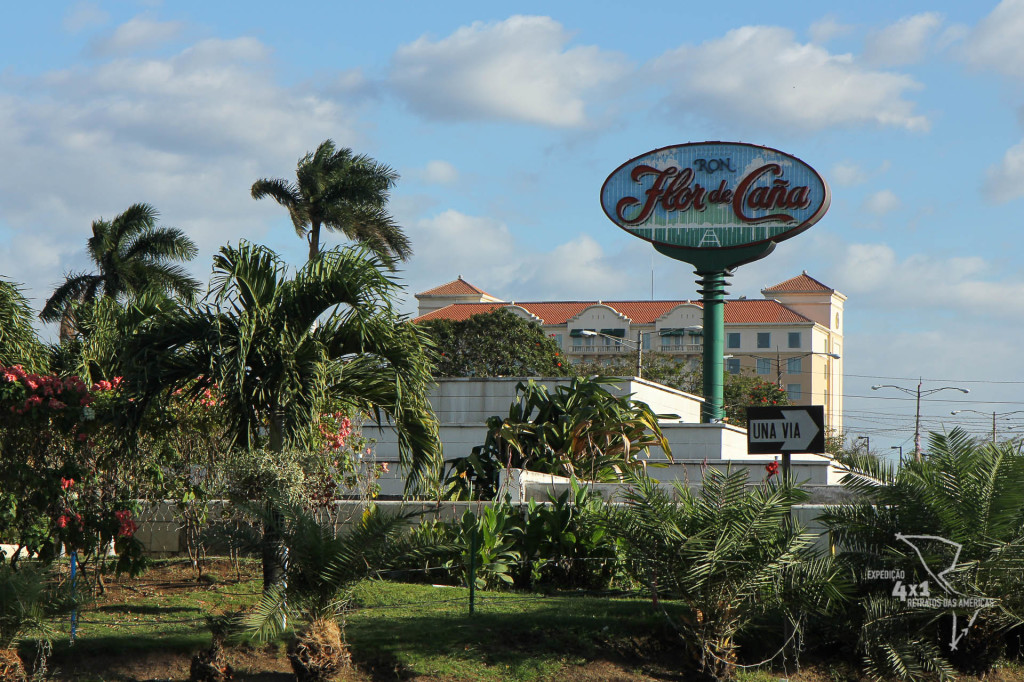Ficha 4 × 1
Date: 02/02/2013 to 04/02/2013
Saímos of: Choluteca – Honduras
Total distance: About 170 km
Where to sleep: Hostel Leon Imperial.
Filled Tire : Leon still exudes the air of a city that fought for their freedom for decades. No doubt the visit to the Museo de la Revolución Historical guided by a former guerrilla move much with us.
Final destiny: Leon – Nicaragua
Travel time: Just over 4 hours, since that day we had to pass the border - which was quiet until.
What we eat good: The food is one of Nicaragua's most similar to our cuisine. The Al Carbon restaurant serves a delicious meat. The El Desayunaso serves a hearty breakfast with juices typical!
Tire murcho: Difficult to pinpoint one. Perhaps the central square being refurbished: is something good for the city, but could not enjoy it to its fullest.
Path: We left for Choluteca CA-3 bordering on Guasaule. From there follow the same road to Leon.
In 1912, President (U.S.) William H. Taft afirmava: “The day is not far when three stars and bars flags will mark three points equidistant extension of our territory: u at the North Pole, another in the Panama Canal and the third at the Polo Sst. Throughout the hemisphere, Fate of, will be our, as is ours morally because of our racial superiority. " […] companies (Americans) would take possession of the land, Customs, treasures and governments; the "marines'Landed on all sides (Central America) to protect the lives and interests of American citizens. […] The Epic of Augusto César Sandino moved the world. A luta longa […] derived from land claims and kept alive the anger peasant […] With music by Adelita, guerrillas sang: In Nicaragua, you, is the mouse that the cat picks. (GALEANO, Eduardo - The Open Veins of Latin America. p. 156 the 160. The&PM, 2011 - Translation of 'Open Veins of Latin America ', of 1978. )
As in almost all trips that someone does for many countries, on our return to Brazil, were customarily dealt with the question: "What place (or country) what you liked best?”. Difficult, nor?! Imagine then reach consensus one place when the experiment was experienced during 13 months and 5 people! Some insist: “Ah, but what if they make a Top 3?! Top 5?!” Ok! If we dig a little more range and ponder several variables, natural beauty from unusual for us Brazilians, passing the cost of the country, receptivity of the population, to the genuine learning its history and culture, managed to assemble a short list of 5 the 10 places. And although this list go to number 1 (almost unanimously) Alaska, the place that impresses most people to be at the top of this list is Nicaragua! Why?! Well, to tell a little of what we feel there, we first need to outline a historical context of the country…
Let's go back then, the late nineteenth century, around the year 1848…
Lake Nicaragua is the largest lake in Central America close and the second largest in Latin America, second only to the famous' Titicaca’ (in Bolivia). In 1848, 10 years after the complete independence of Nicaragua - which occurred in 1838 (notice that it was only 16 years after our) - The United Kingdom and, mainly, the U.S. turned their eyes to the country. It, the latter, never took. The interest of the superpowers were to build a transoceanic canal in Central America. At that time, the great Nicaraguan lake, which combined with its rivers attachments, virtually connected the Pacific to the Atlantic, seemed the perfect place for the construction of such a canal!
No entanto, this period two important Nicaraguan cities (currently two of the main sights of the country) lived in constant conflict: on one side Leon, capital Liberal; and the other, Granada, two Conservative headquarters. In an attempt to pacify their differences, cities come to an agreement and, in 1852, transform Managua (equidistant from two) in the capital. 'Happy ending for both right?'Not so! What Granada and Leon did not know is that not one, or other, were his main rivals for control of Nicaragua. The main opponent was named USA. And the great eagle put its talons resolves once the country, from 1893.
After 30 years of conservative dominance of (supported by U.S. and UK who controlled different regions and institutions in the country) and political instability (with including a curious episode of the American mercenary adventurer, Willian Walker, who took advantage of a battle between Leon and Granada to proclaim himself president of the country) Liberals take power, in 1893, by means of General José Santos Zelaya. In steady, Zelaya approves a new constitution - modern and nationalist - dictatorial measures and establishes close relations with Germany and Japan, in order to establish a partnership for the construction of a canal in the country.
Tsc tsc tsc… the U.S. would not leave so cheap… Bothered with financial losses in the country the U.S. decide to build your desired channel in Panama. It, to ensure that they did not have any competition to that channel, Uncle Sam decides to intervene in Nicaragua and thwart Zelaya. Os 'gringos', are known as U.S. citizens in Central America, began to support the return of the Conservatives to power by sending 'marines'In the region. Consequence: in 1907 Zelaya is overthrown! Then, the next two decades the U.S. are constantly sending 'marines’ to place and remove presidents; take control of customs, of railways and the central bank. (CURIOSITY: the influence of the 'gringos' was so great in Nicaragua - and Central America - that Baseball is sport number 1 no country!).
But liberals Nicaraguans do not accept such intervention in the country! And that's what the great leader SURGE – that would become one of the biggest icons, not only in Nicaragua, but the global uprisings against oppression of the superpowers: César Augusto Sandino! As? Liberal Party leaders decide to launch into guerrilla, Once de por 1926. Among them stands out the figure of Augustus Sandino. After numerous agreements, presidential elections and the withdrawal of American troops from the country (when they secured the proper training of the National Guard for nearly 10 years old), Sandino put down their arms and accept an invitation to dinner then president, e former general Guarda Nacional, Anastasio Somoza proposing a plan for disarmament. Sandino falls ambushed and Somoza is assassinated in 1934 on the way to dinner, paving the way for the worst years of dictatorship and embezzlement in the country. Nicaragua falls into a deep dictatorship over 45 years for control of the Somoza family. Supported by the U.S., Somoza - and Nicaragua - have become a stronghold U.S. political leaders to overthrow Guatemala and Cuba.
Only in 1979 (34 years ago) Liberals return to power in a country devastated financially. "Buds" international aid over an economically devastated Nicaragua. But also there is the period of the Cold War and under the guise of communism (aham!) President Ronald Reagan establishes an embargo on Nicaragua and supports an absurd counterrevolutionary military assault known as the Contras in an attempt to re-master the power in the country (in addition to establishing an embargo on 1985) Well, not even need to mention that this led to a series of new conflicts and guerrilla actions in the country. The Cons, US-funded, only surrendered their weapons in 1990!!! period in which the U.S. also decided to withdraw the embargo on the country.
It, today, bit by bit, Nicaragua tries to recover economically. In the early years of Sandinista government party - when the country was trying to recover from the terrible period of the Somoza government - there was redistribution of agricultural lands to local cooperatives, reduction of illiteracy 50% to 13%, elimination of polio and reduction of child mortality in 1 third.
Yes! Nicaragua is a country so small geographically, but with a story so intense! And the pride of "victory" achieved by reducing the massive U.S. intervention in control of the country is still very recent in the heart of the Nicaraguan people suffered and goes against the reality of the rest of Central American countries. So much to em 2011 President Daniel Ortega said he would open a new case against the U.S. at the International Court in The Hague (Holland) with respect to a process of compensation of the decade 80, where the U.S. were ordered to pay the sum of U.S. $ 17 billion - and that still refuse to pay!!!
Many of you reading this post might think if all this is not some abstract, or far from the reality of a traveler. After all, every country has its history, feelings of pride and appreciation of national. No entanto, Leon, Nicaragua, a city is really different. Despite strong international tourism, the bastion of liberal Nicaraguan still has his "fervor" revolutionary. And it was clear when we got on our first tour of the city - even without much knowledge of the history of the country. Within the first hour we came across some boys playing basketball and skateboarding in a block near the city center. A huge and beautiful mural on one of the side walls of the court said: "For freedom we fought and today vowed to defend" (We fight for freedom and today vowed to defend it). And that wall was not there alone! Other murals, images and references - and even a museum - those who fought for the sovereignty of the country were seen along Leon.
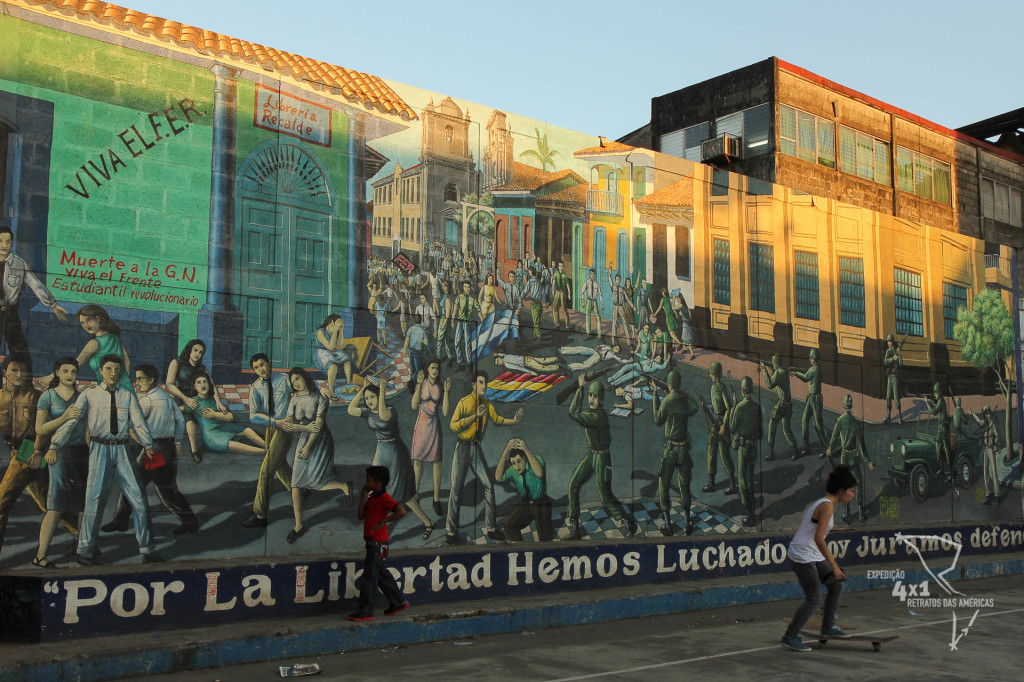
The beautiful mural in announcing that we went into a city that still boasts the freedom won in a distant past nothing. (Leon, Nicaragua)
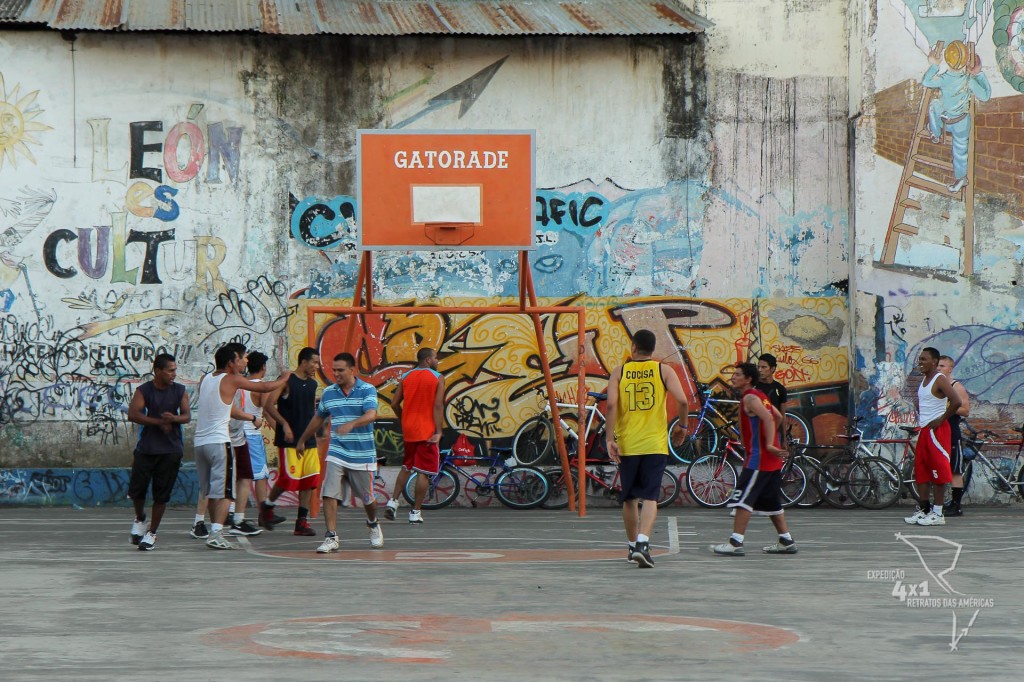
A court in the central square has murals and phrases impact everywhere. The court is always busy for city youth – Leon em, Nicaragua.
In the western part of the city, one very old building that used to be the Palace of Communications at the time of the dictator Somoza, out in the recent past the last "stronghold" of the Sandinista resistance. Today it houses the simple, but passionate, ‘Historical Museum of the Revolution ' maintained by Associção Fighters 'Historical'Heroes de Veracruz ". Bullet holes in the walls (internal and external); artifacts similar to those used by guerrilla fighters; photos and murals recounting the brave history of Sandino and his allies; and conduct of the visit to the museum by a former guerrilla own!! gave the 'air' pluperfect to feel inside the living history of Nicaragua! The nice Mr William liked it so much that we made sure to take us to a favorite place of revolutionaries within the building: Roof. Despite the old roof and half loose, senhor in the William ensured it was safe. From there we saw in the distance some of the Nicaraguan volcanoes is a leading natural beauty of the country (that will tell in detail in later posts) and witness the beautiful sunset in the warm late afternoon listening to stories lived by Willian.
Walk for Leon is very nice! The sleepy town is very clean, wide streets and is very well conserved. Main Praça em Sua is assentada reform and nela is a grandiose baroque Basilica of the Assumption Cathedral of Leon. The highlight of the visit is to be able to walk through the ceiling of the basilica! (it is, we can say that we know well the high León! hehehe). Not far away is the very entertaining Museo de Leyendas y Tradiciones (Museum of Legends and Traditions) which has icons and legends Nicaraguans that are transmitted across generations.
And most interesting of all is that the cultural values that revolutionary sentiment, questioner, of freedom and the desire for change without the influence of the superpowers (num sense "entreguista", like many other Latin countries) is still very present in the Nicaraguan people - that does not necessarily mean that they deny the capital of foreign investment, but who simply want to preserve their traditions and sovereignty.
On the walk we took in the beautiful island of Ometepe (next posts) know two people who have touched us very. With only 20 years old, the young Omar guided us in the ascent of the volcano Concepción. Architecture student by distance learning, Omar performs tracks as a way to supplement the family income. On the way, told us proud recent history of his country, the victories to expel the 'gringos' and on recent government investment in education and entrepreneurship, in order to increase the country's competitiveness. Funny thing is that, even before we climb the volcano with Omar, Mr. Ramón – retired fighter army liberal - prophesied within Tanajura teary-eyed: "Many speak evil, but I believe in the youth of today. Young people today have greater freedom and opportunities to transform the country ". He said to believe that "the inner energy of a young, his joy and spirit transformer would be able to transform the current social and economic situation of the country. "Something that seemed impossible in his time.
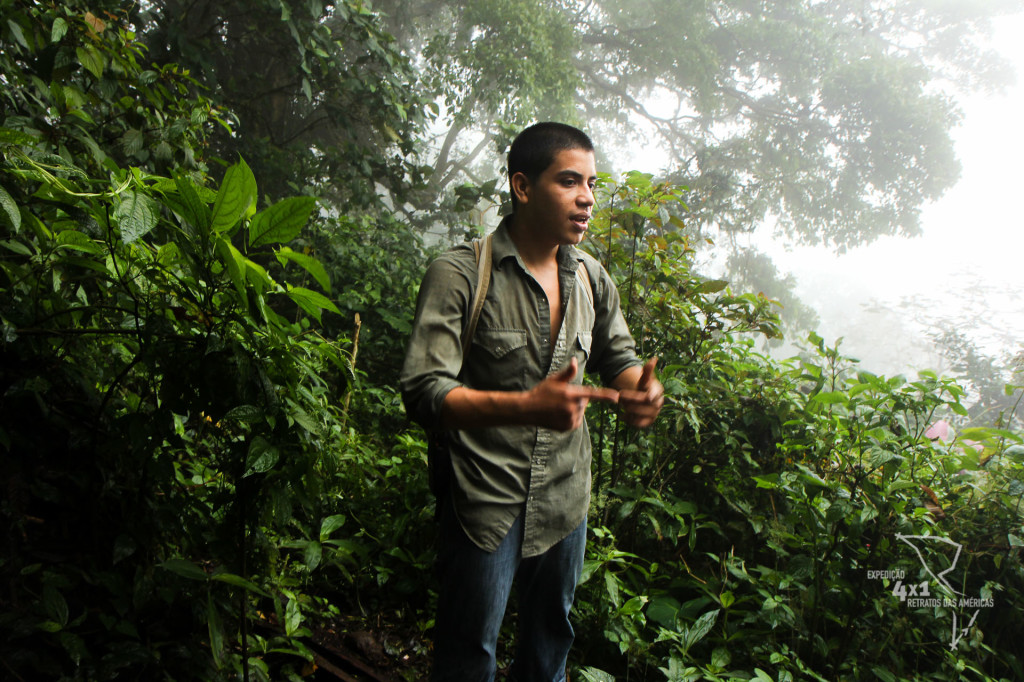
The young guide Omar during the trail had passion in the history of Nicaragua and give us your opinion about the current reality of the country.
As for nós, we sat enthralled hair charisma of Nicaraguans. And we can even take a chance with an air of 'supporter' who, if all young Nicaraguans have the same spirit of seriousness of Omar, power of the words of Mr.. Ramón or determination of other Nicaraguans we met while we were there, we make sure that the country is on track!
We left Leon with toward our next destination: Masaya and its active volcano with lava! And the way we were already heightened by other volcanoes we saw along the road. But before we decided to stop by in Managua to get an idea of the city.
The Nicaraguan capital account with approximately 2 million inhabitants and is the largest city in the country. We had researched a little about the city but no attractive particularly caught our attention so we spent a little over 30 minutes giving a spin around the lake of Managua and left… The anxiety to see an active volcano with lava was great, waited from Guatemala! But we knew we had barely a small impediment to the long-awaited meeting … ![]()
